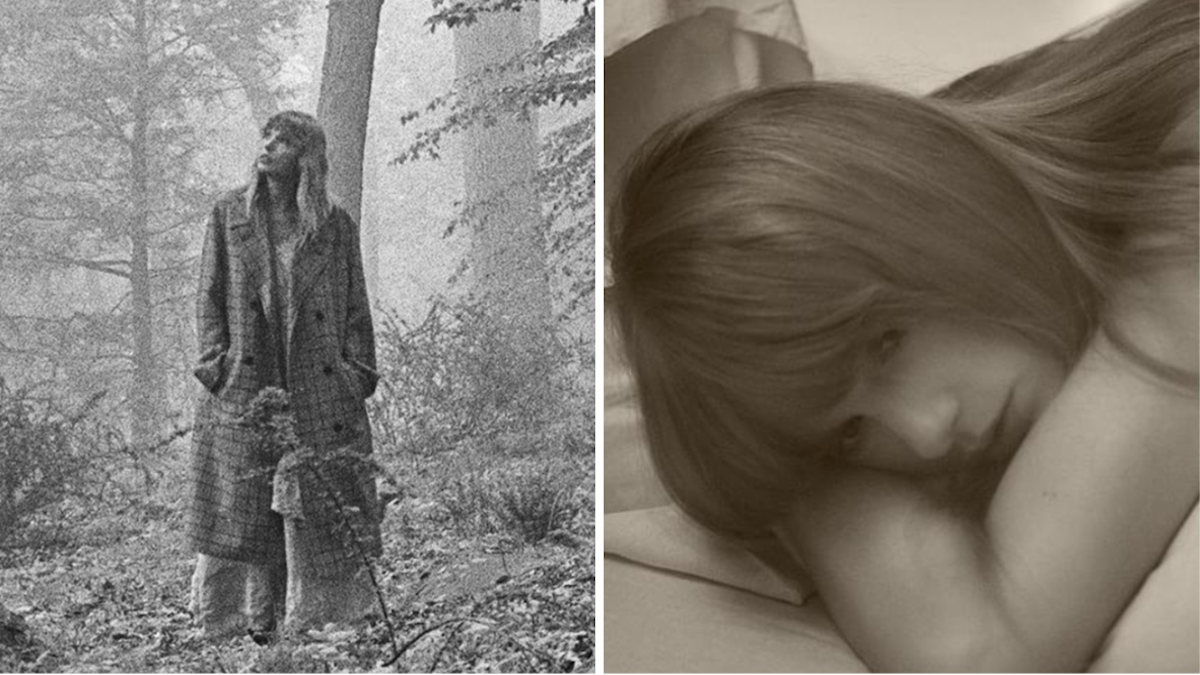When we think of journalism, the image that often comes to mind is the go-getting do-gooder out to uncover the Truth with a capital T. Or the beleaguered cynic who uncovers something so big even they can’t turn away because it’s the right thing to do. Sometimes the two are partnered together, and hilarity ensues!
These archetypes have prevailed because we want to believe—and they certainly play up the idea—that journalism and journalists are inherent fact-finders and truth-seekers. Hollywood certainly perpetuates the idea with movies like All The President’s Men; Spotlight; Veronica Guerin; Good Night, and Good Luck; and The Constant Gardener focusing on the search for truth and the journalists who are ethically bound to tell it, no matter the cost. With the focus on truth, ethics, and accountability more important than ever given our current political climate, it’s important that we understand the not-so-secret origins of investigative journalism and the woman who paved the way for the lauded efforts of today’s most trusted reporters, both real and fictional.
Nellie Bly was born Elizabeth Jane Cochran on May 5th, 1864 in the township of Cochran’s Mills, Pennsylvania, which was founded and named for her father, a local judge and millworker. Known as “Pink” due to her love of the color, young Elizabeth learned early in life to value hard work and showed a dogged determination when she set her mind to a task. At the age of six, her father passed away, and three years later, her mother remarried. The abusive behavior of her step-father, however, forced her mother, Mary Jane, to go through divorce proceedings that left the family struggling. Upon moving to Pittsburgh in 1880, the now sixteen-year-old had dropped “Pink” and added an “e” to the end of Cochran in order to be considered more sophisticated, but found herself confronted with the misogynist writings of the Pittsburgh Dispatch’s Erasmus Wilson, better known as the “Quiet Observer.” In an article entitled, “What Girls Are Good For,” Wilson, as Arthur Fritz put it, “admonished women for even attempting to have an education or career, suggesting they should stray no further than the home.”
Writing under the pseudonym “Lonely Orphan Girl,” Elizabeth fired back at the editor, George Madden, who was so impressed by her passionate writing that he offered her the opportunity to write a rebuttal in the paper. Still writing as Lonely Orphan Girl, Elizabeth’s rebuke, “The Girl Puzzle,” won Madden over enough that he offered her a job at the Dispatch. At the time, female journalists, especially reporters for newspapers, usually wrote under a pen name. Inspired by the song “Nelly Bly” by Stephen Foster, Madden chose the title character for Cochrane, but the typesetter misspelled the name. Thus, Elizabeth Cochrane became “Nellie Bly.”
Emboldened by her new state of employment, Bly rejected topics typically covered by women—gardening, fashion, gossip—in favor of issues that spoke to her sense of justice and highlighted the inequitable position of women in society. Inspired by her mother, Bly wrote about the reform of Pennsylvania’s divorce laws as well as the trials and tribulations of working girls and women in the state’s factories. According to Matthew Goodman’s book, Eighty Days: Nellie Bly and Elizabeth Bisland’s History-Making Race Around The World, these were the topics Bly did best: “about people much like her, working people, especially women, who tried to maintain their dignity, perhaps even have a bit of fun, in the face of hardship.”
After a year at the Dispatch, she convinced Madden to send her on assignment to Mexico as a foreign correspondent. For six months, Bly, accompanied by her mother, reported on the daily lives and customs of the Mexican people. She made sure to pay special attention to bolstering the work of women in her reports while also noting that poverty was rampant amongst the common people. She was forced to flee the country, however, when her report on the unfair imprisonment of journalists under the regime of Porfirio Diaz put her in danger of imprisonment, as well. Back in Pittsburgh, Bly denounced Diaz and compiled her reports into a book entitled Six Months in Mexico. Her work was popular, but the business community took notice of her rabble rousing and threatened to pull advertising from the Dispatch unless she was assigned something more agreeable to her station. After writing such an article, no doubt a cutting exposé on the garden industry, Nellie also handed in her resignation.
Traveling to New York, and going half a year without work, Bly talked her way into the office of John Cockerill, managing editor for The New York World, determined to get a job. Her first assignment for the World became one of her most famous feats of journalism: an undercover investigation of the notorious Blackwell’s Island Insane Asylum for Women. Feigning insanity, Bly managed to convince neighbors and doctors of her frail state of mind and spent ten days in the asylum observing the living conditions and treatment of patients (see the Drunk History episode starring Laura Dern as Bly).
In the course of her week-and-a-half stay, Bly was subjected to filthy living quarters, rotten food, ice baths, and physical abuse from doctors and nurses until the World pulled her from the facility. Her articles about the experience were compiled into a book, Ten Days in a Madhouse (1887), resulting in a federal investigation into the asylum, which resulted in the approval of a larger budget for the Department of Public Charities and Corrections and ensured medical examinations were more rigorous to avoid wrongful admissions in the future. Bly continued her one-woman crusade by going undercover to expose government corruption, the plight of unwanted children, and the poor working conditions and treatment of box factory employees. She was so popular that the World put her name in the headlines to attract more readers to the exploits of their most famous reporter. To her fans, she was a voice for social justice, but to her critics, she was merely a “stunt” journalist.
Arguably, her most “stunt”-worthy exploit was the piece that made her a household name. Inspired by Jules Verne’s Around the World in Eighty Days, Bly pitched her own “race” around the world to beat Phileas Fogg’s record-setting time. It took almost a year of planning and needling her editors, but on November 14, 1889, Bly set sail on the Augusta Victoria to begin her journey. Leaving with only one change of clothes, a single bag for her toiletries, and her checkered coat, Bly navigated the globe by ship, train, burro, and balloon, traversing nearly 25,000 miles in 72 days, six hours, eleven minutes, and fourteen seconds. Her dispatches to the World documented the journey of a mostly unaccompanied woman through England and France (meeting Jules Verne and his wife, Honorine), the Suez Canal, and across Singapore, Hong Kong, and Japan. The World even created a “Nellie Bly Guessing Match” to ratchet up subscriptions by giving readers a chance to guess the exact date and time when Bly would arrive in New York.
Unbeknownst to Bly, a rival newspaper, Cosmopolitan, sent their own female correspondent, Elizabeth Bisland, in the opposite direction in their own efforts to beat Bly and Verne. It wasn’t until several weeks into the “race” that Bly even knew she had a rival, though the papers seemed happy enough to paint a different picture. Despite such news, or perhaps invigorated by it, Bly still arrived in New York six days ahead of the fictional Fogg and four days ahead of Bisland. She set a world record that was bested only a few months later.
There are many more stories to tell of Bly’s career after her globe-trotting achievement (my favorite: staying overnight in a haunted house armed with two pistols), but her lasting influence on pop culture and journalism cannot be ignored. Bly all but pioneered investigative journalism, inspiring a wave of female reporters who set out to be just like her. Papers began to hire “stunt girls” as a means of aping Bly’s methods.
Fifty years later, she served as partial inspiration for one of DC Comics’ most enduring and intrepid journalists: Lois Lane. Debuting in Action Comics #1, Lois was part Girl Friday and part Nellie Bly—a romantic partner but also a sharp-minded, no-nonsense woman of her time. DC Comics went so far as to acknowledge Bly in Superman #49 (1947) wherein Lois attempts to emulate the record-setting trip in “Lois Lane Globe-Trotter.” Most recently, Gwenda Bond’s novel Lois Lane: Fallout, a YA novel about the adventures of a younger Lois, confirmed Bly as her journalistic hero.
Having endured reboots, resets, retcons and the like, Lois and her tenacious pursuit of truth for the sake of justice have come to define who we think of when we imagine journalistic integrity. She’s passionate, driven, and she’s not afraid to get her hands dirty. Lois exists in a world of literal gods and monsters, and she’s more than prepared to bring them down with the perfect turn of phrase. Sound familiar?
(image via DC Comics)
—The Mary Sue has a strict comment policy that forbids, but is not limited to, personal insults toward anyone, hate speech, and trolling.—
Follow The Mary Sue on Twitter, Facebook, Tumblr, Pinterest, & Google+.








